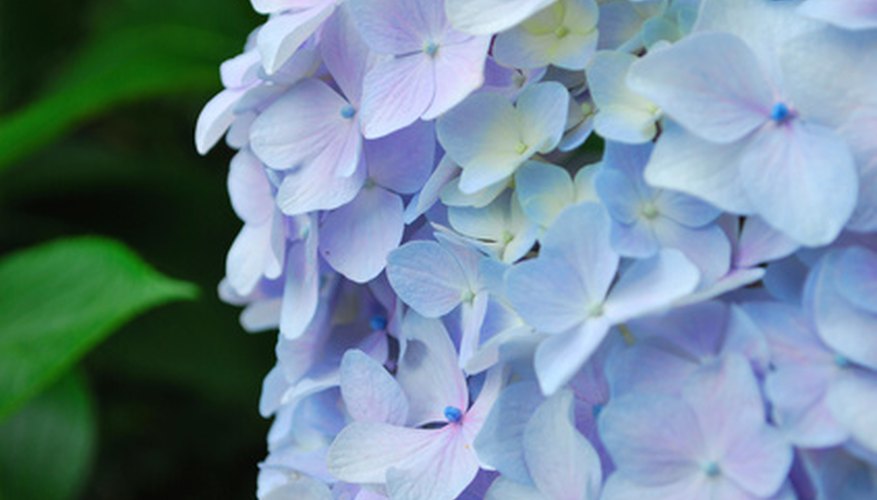Hydrangeas are deciduous shrubs known for their large, brightly coloured blooms. Diseases often affect this lovely flower, reducing its value and attractiveness. However, most serious diseases do not commonly occur in the home landscape, but in commercial settings. Hydrangeas are susceptible to root rot diseases, which cause brown spots on the stems.
Identification
Phytophthora root rot most frequently occurs in container grown hydrangeas in commercial settings. Oak-leaf hydrangeas grown in containers are especially susceptible to the effects of this disease. Phytophthora root rot may occur in home grown hydrangeas, when other diseased plants are present.
Hydrangeas that are planted in areas where water is standing, are at an increased risk of developing Phytophthora root rot.
- Phytophthora root rot most frequently occurs in container grown hydrangeas in commercial settings.
- Hydrangeas that are planted in areas where water is standing, are at an increased risk of developing Phytophthora root rot.
Causes
Excessive watering and poorly drained soil are the most common causes of Phytophthora root rot. This disease is caused by the fungus Phytophthora nicotiana, which survives in infected roots, crowns, contaminated potting soil and crop debris. Fungal diseases are often associated with watering problems in plants. Overwatering provides excess moisture, which promotes disease development. Failing to provide adequate amounts of water can also increase the risk of fungal disease development.
- Excessive watering and poorly drained soil are the most common causes of Phytophthora root rot.
Effects
Phytophthora root rot causes hydrangeas to develop brown spots on their stems, which extends above the soil line. Other symptoms associated with this disease include yellowing of leaves, premature leaf loss and stunted growth. The roots of hydrangeas that are infected with Phytophthora root rot turn brown and are brittle. The severity of symptoms depends on the degree of root rot, but sudden wilting of foliage is often the first symptom associated with Phytophthora root rot in hydrangeas.
- Phytophthora root rot causes hydrangeas to develop brown spots on their stems, which extends above the soil line.
- The severity of symptoms depends on the degree of root rot, but sudden wilting of foliage is often the first symptom associated with Phytophthora root rot in hydrangeas.
Control
Cultural control practices and proper sanitation are key to preventing and controlling Phytophthora root rot in hydrangeas. Covering production beds with plastic and gravel as well as proper watering practices will help prevent disease. Plant hydrangeas in containers with fast draining, bark-based potting soil. Applying preventive fungicides may help reduce the change of disease. Purchase a fungicide labelled for use on hydrangeas for best results.
- Cultural control practices and proper sanitation are key to preventing and controlling Phytophthora root rot in hydrangeas.
